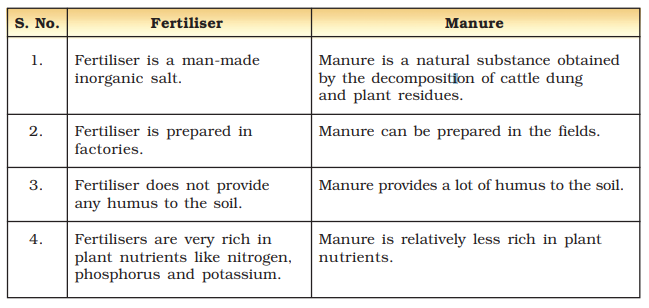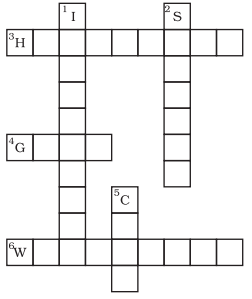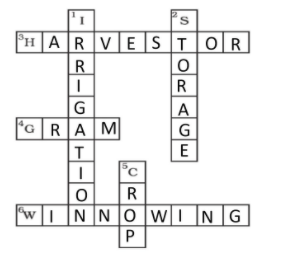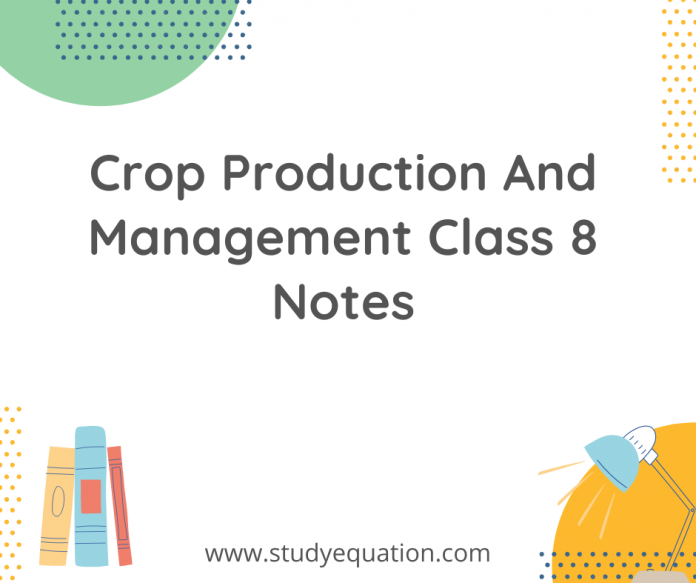Crop Production And Management Class 8 Notes, here we are going to give you a summary of Crop Production And Management Class 8 Notes. In this chapter we will study about the different types of agricultural practices, the tools used in agriculture and many more things. Your all doubts from the chapter of Crop Production And Management Class 8 (Notes) of class 10 will be cleared from this summary.
Table of Contents
Crop Production And Management Class 8 Notes : Introduction
You have learnt that all living organisms require food. Plants can make their food themselves. Animals including humans can not make their own food. In order to provide food for a large population— regular production, proper management and distribution is necessary. Thus, agriculture is very important for human beings. We need to learn all these practices so that we can serve our nation about these practices better.
Also Read : What Is Hardware and Software
Crop Production And Management Class 8 Notes : Crops
Crop: When plants of the same kind are cultivated at one place on a large scale, it is called a crop.
In other words, a crop of wheat means that all the plants grown in a field are that of wheat.
Crops are of different types like cereals, vegetables and fruits.
Crops can be classified on the basis of the season in which they grow. The climatic conditions like temperature, humidity and rainfall vary from one region to another.
Two broad cropping patterns can be identified in India. These are:
1. Kharif Crops :
- Crops which are sown in the rainy season.
- Rainy season is from – June to September.
- Examples of Kharif crops: Paddy, maize, soyabean, groundnut and cotton
2. Rabi crops:
- Crops which are sown in the winter season
- Winter season is from – October to March
- Examples of Rabi crops: wheat, gram, pea, mustard and linseed.
3. Other crops:
Pulses and vegetables are grown during summer at many places.
Crop Production And Management Class 8 Notes : Basic Practices of Crop Production
The basic agricultural practices are:
(i) Preparation of soil
(ii) Sowing
(iii) Adding manure and fertilisers
(iv) Irrigation
(v) Protecting from weeds
(vi) Harvesting
(vii) Storage
Preparation of Soil
- It is the first step before growing a crop
- One of the most important tasks in agriculture is to turn the soil and loosen it
- Then the roots to penetrate deep into the soil.
- Loose soil help the roots to breathe easily even when they go deep into the soil.
- Loosened soil helps in the growth of earthworms and microbes present in the soil
- These microbes and earthworms further turn and loosen the soil and add humus to it.
- Only a few centimetres of the top layer of soil supports plant growth, turning and loosening of soil brings the nutrient-rich soil to the top so that plants can use these nutrients.
- The process of loosening and turning of the soil is called tilling or ploughing
- It is done by using a plough
- Watering before ploughing is important for dry soil
- The ploughed field may have big clumps of soil called crumbs. It is necessary to break these crumbs.
- Levelling the field is beneficial for sowing as well as for irrigation. Levelling of soil is done with the help of a leveller.
- Manure is added to the soil before tilling. This helps in proper mixing of manure with soil.
Crop Production And Management Class 8 Notes : Agricultural Implements
The different agricultural tools are:
Plough:
- Being used since ancient times for tilling the soil
- It is to help the soil for adding fertilisers to the crop
- It is used for removing the weeds and turning the soil.
- Plough is made of wood
- It is drawn by a pair of bulls or other animals (horses and camels).
- It contains a strong triangular iron strip called ploughshare.
- The main part of the plough is a long log of wood which is called a ploughshaft.
- There is a handle at one end of the shaft.
- The other end is attached to a beam which is placed on the bulls’ necks.
- One pair of bulls and a man can easily operate the plough
- The indigenous wooden plough is increasingly being replaced by iron ploughs nowadays.
Hoe:
- It is a simple tool
- Hoe is used for removing weeds
- It is used for loosening the soil.
- Hoe has a long rod of wood or iron.
- A strong, broad and bent plate of iron is fixed to one of its ends ehich works like a blade.
- It is pulled by animals
Cultivator:
- Ploughing is also done by tractor-driven cultivator.
- The use of cultivator saves labour and time.
Sowing
- Sowing is an important part of crop production.
- Before sowing, good quality, clean and healthy seeds of a good variety—are selected.
- Farmers prefer to use seeds which give high yield.
- NOTE: Damaged seeds become hollow and are thus lighter. Therefore, they float on water.
- Before sowing, one of the important tasks is to know about the tools used for sowing seeds.
Crop Production And Management Class 8 Notes : Sowing tools
The different sowing tools are:
Traditional tool:
- It is shaped like a funnel.
- The seeds are filled into the funnel, passed down through two or three pipes having sharp ends.
- These ends pierce into the soil and place seeds there.
Seed drill:
- It is used for sowing with the help of tractors.
- This sows the seeds uniformly at equal distance and depth.
- It ensures that seeds get covered by the soil after sowing.
- This protects seeds from being eaten by birds.
- Sowing by using a seed drill saves time and labour.
- Appropriate distance between the seeds is necessary to avoid overcrowding of plants.
- This helps plants to get sufficient sunlight, nutrients and water from the soil.
- At times a few plants may have to be removed to prevent overcrowding.
Adding Manure and Fertilisers
Manure and Fertilisers: The substances which are added to the soil in the form of nutrients for the healthy growth of plants are called manure and fertilisers.
Soil supplies mineral nutrients to the crop plants.
These nutrients are essential for the growth of plants.
Manuring
Manuring: In certain areas, farmers grow crop after crop in the same field. The field is never left uncultivated or fallow. Continuous cultivation of crops makes the soil poor in nutrients.
Therefore, farmers have to add manure to the fields to replenish the soil with nutrients.
This process is called manuring.
Improper or insufficient manuring results in weak plants.
Manure is an organic substance obtained from the decomposition of plant or animal wastes.
Fertilisers
Fertilisers are chemicals which are rich in a particular nutrient. These are produced in factories. Some examples of fertilisers are— urea, ammonium sulphate, super phosphate, potash, NPK (Nitrogen, Phosphorus, Potassium).
The use of fertilisers has helped farmers to get better yield of crops such as wheat, paddy and maize. Excessive use of fertilisers has made the soil less fertile.
Fertilisers have also become a source of water pollution. To maintain the fertility of the soil, we must substitute fertilisers with organic manure or leave the field uncultivated (fallow) in between two crops.
The use of manure improves soil texture as well as its water retaining capacity. It replenishes the soil with nutrients.
Another method of replenishing the soil with nutrients is through crop rotation.
This can be done by growing different crops alternately. For eg. farmers in northern India used to grow legumes as fodder in one season and wheat in the next season.
Difference between manures and fertilisers are:
The difference between manures and fertilisers are:

Advantages of Manure :
The organic manure is considered better than fertilisers. This is because
- It enhances the water holding capacity of the soil.
- Manure makes the soil porous due to which exchange of gases becomes easy.
- It increases the number of friendly microbes.
- It improves the texture of the soil.
Crop Production And Management Class 8 Notes : Irrigation
- Water is important for proper growth and development.
- Water is absorbed by the plant roots.
- Along with water, minerals and fertilisers are also absorbed.
- Plants contain nearly 90% water.
- Water is essential because germination of seeds does not take place under dry conditions.
- Nutrients dissolved in water are transported to each part of the plant.
- Water protects the crop from both frost and hot air currents.
- To maintain the moisture of the soil for healthy crop growth, fields have to be watered regularly.
- The supply of water to crops at regular intervals is called irrigation.
- The time and frequency of irrigation varies from crop to crop, soil to soil and season to season.
Sources of irrigation
- Wells
- Tubewells
- Ponds
- Lakes
- Rivers
- Dams
- Canals
Traditional Methods of Irrigation
The various traditional ways are:
(i) moat (pulley-system)
(ii) chain pump
(iii) dhekli
(iv) rahat (Lever system)
Modern Methods of Irrigation
Some modern methods of irrigation are discussed below:
(i) Sprinkler System:
- Useful in uneven land where sufficient water is not available.
- The perpendicular pipes, having rotating nozzles on top, are joined to the main pipeline at regular intervals.
- When water is allowed to flow through the main pipe under pressure with the help of a pump, it escapes from the rotating nozzles.
- It gets sprinkled on the crop as if it is raining.
- Sprinkler is very useful for lawns, coffee plantation and several other crops
(ii) Drip system :
- Here, water falls drop by drop directly near the roots.
- So it is called drip system.
- It is the best technique for watering fruit plants, gardens and trees.
- Water is not wasted at all.
- It is a boon in regions where availability of water is poor.
Protection from Weeds
Weeds: In a field many other undesirable plants may grow naturally along with the crop. These undesirable plants are called weeds.
The removal of weeds is called weeding. Weeding is necessary since weeds compete with the crop plants for water, nutrients, space and light. Some weeds interfere even in harvesting and may be poisonous for animals and human beings.
Farmers adopt many ways to remove weeds and control their growth.
Tilling before sowing of crops helps in uprooting and killing of weeds, which may then dry up and get mixed with the soil. The best time for the removal of weeds is before they produce flowers and seeds.
The manual removal includes physical removal of weeds by uprooting or cutting them close to the ground, from time to time. This is done with the help of a khurpi. A seed drill is also used to uproot weeds.
Weeds are also controlled by using certain chemicals, called weedicides, like 2,4-D. These are sprayed in the fields to kill the weeds. They do not damage the crops.
Crop Production And Management Class 8 Notes : Harvesting
Harvesting of a crop is an important task. The cutting of crop after it is mature is called harvesting. In harvesting, crops are pulled out or cut close to the ground. It usually takes 3 to 4 months for a cereal crop to mature.
Harvesting in our country is either done manually by sickle or by a machine called harvester.
Threshing: In the harvested crop, the grain seeds need to be separated from the chaff. This process is called threshing. This is carried out with the help of a machine called ‘combine’ which is in fact a harvester as well as a thresher.
Winnowing: Farmers with small holdings of land do the separation of grain and chaff by winnowing.
Crop Production And Management Class 8 Notes : Storage
Storage of produce is an important task.
If the harvested grains are to be kept for longer time, they should be safe from:
- moisture
- Insects
- Rats
- Microorganisms.
Harvested grains have more moisture. If freshly harvested grains (seeds) are stored without drying, they may get spoilt or attacked by organisms, making them unfit for use or for germination. The grains are properly dried in the sun to reduce the moisture in them. This prevents the attack by insect pests, bacteria and fungi.
Farmers store grains in jute bags or metallic bins. However, large scale storage of grains is done in silos and granaries to protect them from pests like rats and insects.
Animal husbandry
Animal husbandry: Animals reared at home or in farms, have to be provided with proper food, shelter and care. When this is done on a large scale, it is called animal husbandry.
Crop Production And Management Class 8 Notes : Exercises
1. Select the correct word from the following list and fill in the blanks.
float, water, crop, nutrients, preparation
(a) The same kind of plants grown and cultivated on a large scale at a place is called crop.
(b) The first step before growing crops is preparation of the soil.
(c) Damaged seeds would float on top of water.
(d) For growing a crop, sufficient sunlight and water and nutrients from the soil are essential.
2. Match items in column A with those in column B.
| Column A | Column B |
| (i) Kharif crops | (a) Food for cattle |
| (ii) Rabi crops | (b) Urea and superphosphate |
| (iii) Chemical fertilisers | (c) Animal excreta, cow dung urine and plant waste |
| (iv) Organic manure | (d) Wheat, gram, pea |
| (e) Paddy and maize |
Ans.
| Column A | Column B |
| (i) Kharif crops | (e) Paddy and maize |
| (ii) Rabi crops | (d) Wheat, gram, pea |
| (iii) Chemical fertilisers | (b) Urea and superphosphate |
| (iv) Organic manure | (c) Animal excreta, cow dung urine and plant waste |
3. Give two examples of each.
(a) Kharif crop
Ans. Maize and soyabean
(b) Rabi crop
Ans. Wheat and Gram
4. Write a paragraph in your own words on each of the following.
(a) Preparation of soil
Ans. It is the first step before growing a crop. One of the most important tasks in agriculture is to turn the soil and loosen it. Then the roots to penetrate deep into the soil.
Loose soil help the roots to breathe easily even when they go deep into the soil. Loosened soil helps in the growth of earthworms and microbes present in the soil. These microbes and earthworms further turn and loosen the soil and add humus to it. Only a few centimetres of the top layer of soil supports plant growth, turning and loosening of soil brings the nutrient-rich soil to the top so that plants can use these nutrients.
(b) Sowing
Ans. Sowing is an important part of crop production. Before sowing, good quality, clean and healthy seeds of a good variety—are selected. Farmers prefer to use seeds which give high yield. Seed drill and traditional tools are used for sowing.
(c) Weeding
Ans. The removal of weeds is called weeding. Weeding is necessary since weeds compete with the crop plants for water, nutrients, space and light. Some weeds interfere even in harvesting and may be poisonous for animals and human beings. Farmers adopt many ways to remove weeds and control their growth.
Tilling before sowing of crops helps in uprooting and killing of weeds, which may then dry up and get mixed with the soil. The best time for the removal of weeds is before they produce flowers and seeds.
(d) Threshing
Ans. In the harvested crop, the grain seeds need to be separated from the chaff. This process is called threshing. This is carried out with the help of a machine called ‘combine’ which is in fact a harvester as well as a thresher.
Crop Production And Management Class 8 Notes : More questions
5. Explain how fertilisers are different from manure.
Ans. 1. Fertiliser is a man-made while manure is a natural substance obtained inorganic salt. by the decomposition of cattle dung and plant residues.
2. Fertiliser is prepared in factories while manure can be prepared in the fields..
3. Fertiliser does not provide any humus to the soil but manure provides a lot of humus to the soil..
4. Fertilisers are very rich in nutrients like nitrogen, nutrients. phosphorus and potassium.
But, manure is relatively less rich in plant plant
6. What is irrigation? Describe two methods of irrigation which conserve water.
Ans. The supply of water to crops at regular intervals is called irrigation.
Two methods of irrigation which conserve water:
(i) Sprinkler System:
- Useful in uneven land where sufficient water is not available.
- The perpendicular pipes, having rotating nozzles on top, are joined to the main pipeline at regular intervals.
- When water is allowed to flow through the main pipe under pressure with the help of a pump, it escapes from the rotating nozzles.
- It gets sprinkled on the crop as if it is raining.
- Sprinkler is very useful for lawns, coffee plantation and several other crops
(ii) Drip system :
- Here, water falls drop by drop directly near the roots.
- So it is called drip system.
- It is the best technique for watering fruit plants, gardens and trees.
- Water is not wasted at all.
- It is a boon in regions where availability of water is poor.
7. If wheat is sown in the kharif season, what would happen? Discuss.
Ans. Wheat is a rabi crop so, wheat would not grow in kharif season. The seeds would get destroyed in excess water due to rainy season as needed by the kharif crop.
8. Explain how soil gets affected by the continuous plantation of crops in a field.
Ans. Continuous cultivation of crops makes the soil poor in nutrients.
Therefore, farmers have to add manure to the fields to replenish the soil with nutrients.
This process is called manuring.
Improper or insufficient manuring results in weak plants.
9. What are weeds? How can we control them?
Ans. In a field many other undesirable plants may grow naturally along with the crop. These undesirable plants are called weeds.
The removal of weeds is called weeding. Weeding is necessary since weeds compete with the crop plants for water, nutrients, space and light. Some weeds interfere even in harvesting and may be poisonous for animals and human beings.
Farmers adopt many ways to remove weeds and control their growth.
Tilling before sowing of crops helps in uprooting and killing of weeds, which may then dry up and get mixed with the soil. The best time for the removal of weeds is before they produce flowers and seeds.
10. Arrange the following boxes in proper order to make a flow chart of sugarcane crop production.

Ans.
- Preparation of Soil
- Ploughing the field
- Sowing
- Manuring
- Irrigation
- Harvesting
- Sending crop to sugar factory.
11. Complete the following word puzzle with the help of clues given below.

Down
1. Providing water to the crops.
2. Keeping crop grains for a long time under proper conditions.
5. Certain plants of the same kind are grown on a large scale.
Across
3. A machine used for cutting the matured crop.
4. A rabi crop that is also one of the pulses.
6. A process of separating the grain from chaff.
Ans.

Crop Production And Management Class 8 Notes : Conclusion
So, in this chapter we have learnt about the different practices of agriculture and how it is done by our farmers. We should be grateful to our farmers for providing us all the food by doing the hard labour. To make the future of agriculture better you can learn more about how seeds can be improved and how tools can be improved to make all the practices easier for our farmers. Farmers are the backbone of our country. We will learn more about the Crop Production And Management in higher classes.


